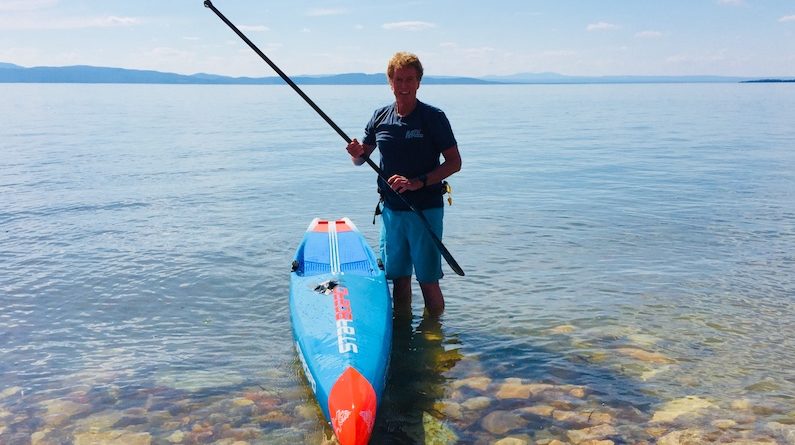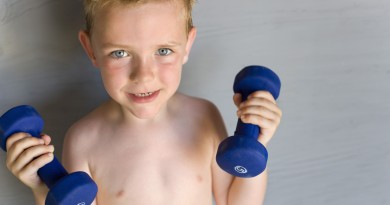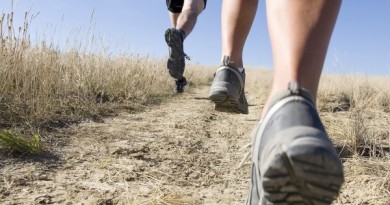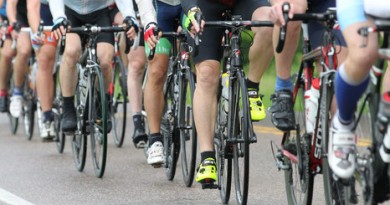Dr. Danger’s Newest Sport
He’s been the chief medical correspondent for NBC, written best-sellers on health and fitness and hosted a reality TV series “Dr. Danger.” Here’s how Stowe’s Dr. Bob Arnot stays in shape.
On May 9, long after Stowe’s lifts stopped turning, Dr. Bob Arnot, now 70, faced a dilemma: whether to skin up Mt. Mansfield, using his ultralight ski mountaineering gear, or practice his stand-up paddleboarding. The former chief medical correspondent for NBC and CBS, host of a reality TV show called “Dr. Danger” and author of The New York Times best-sellers The Aztec Diet and Turning Back the Clock, did both. Dr. Arnot lives in Stowe with his fiancée Amy and son Alysdair. On any given day, he may fly his own plane out of Stowe’s airport to compete in an SUP race, promote his new coffee on the Dr.Oz show in New York, or attend a party in Nantucket. But you can often find him on the Waterbury Reservoir or on Lake Champlain (below), training for the grueling, 20-mile Molokai to Oahu crossing in the World Paddleboard Championship
How does a Vermonter end up racing SUPs in Hawaii?
I started paddling about six years ago. At first, I could barely stand on the board without falling off but now I’m hooked. With so many lakes, Vermont is a great place to learn. I can be on the Waterbury Reservoir at dusk and it’s calm and beautiful or head into Burlington and do a downwinder with the gang at the Burlington Surf Club. People don’t realize how big the lake is but when you’re doing a 10 or 15-mile downwinder, waves really stack up.
What’s the Burlington Surf Club?
It’s a club on the shores of Lake Champlain that just opened this spring but the people behind it, Russ and Roxanne Scully—they own the restaurants The Spot and Spot on the Dock—have been into windsurfing, kiteboarding and sailing for years. Russ invited me to paddleboard with him and then I got him to go do the Molokai to Oahu Race. Then, he started sponsoring big wave surfer Chuck Patterson—so the three of us have gotten to do some epic downwinders.
How did you get to be so good?
I practice pretty much every day I can. In Burlington, we have this guy, Tommy Buday, a three-time Olympic canoe paddler, who comes down to coach once a week and work on technique. I also stay in shape all winter. I did 14 cross-country ski races this year and I’ll do 32 paddleboard races, including my fifth Molokai to Oahu or M20, on July 29.
What’s it like to paddle Hawaii’s big ocean swells?
The M20 is one of the hardest things I’ve ever done, harder even than being an embedded journalist in Iraq in 2003 when Baghdad was bombed. One year I fell and broke a tooth and then a shark started following me. You’re just exhausted but you can’t really let up for a minute because you have to constantly watch the waves. I’ve skied and Nordic skied, done Ironman triathlons and surfed and this is the best workout you can ask for. Paddling really works your core, your legs and your arms.
Any paddling tips for the rest of us?
When I first started out, I thought this was all about strength and my arms and pecks were sore as heck. In truth, there is no better core workout. When you paddle right, everything is engaged: your abs, your pecks, your hamstrings. To set up the proper stance, stand with your knees shoulder-width apart and bent. Start by making an “A-frame” by leaning forward, using your body to form the left side of the A and then let the paddle form the right side. That’s where you want the paddle to enter the water. Next, extend your lower arm out as far as you can and grasp the paddle, then “stack” your upper arm on top of that. Your body should be facing the side of the board, one arm above the other. How far up or down you hold your lower hand on the paddle is like how hard a gear you use on a bike —higher up will mean a shorter, easier stroke; lower down gives you more power.




